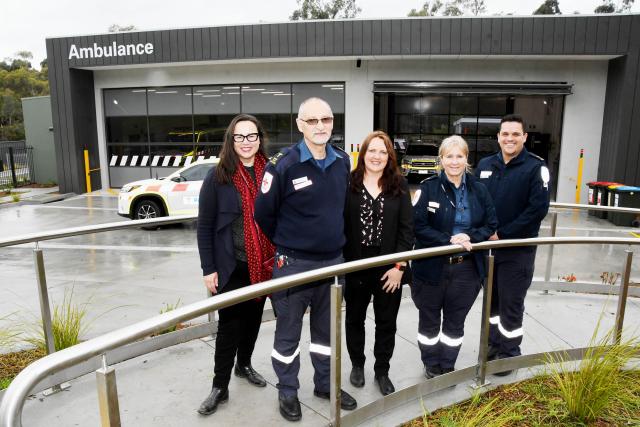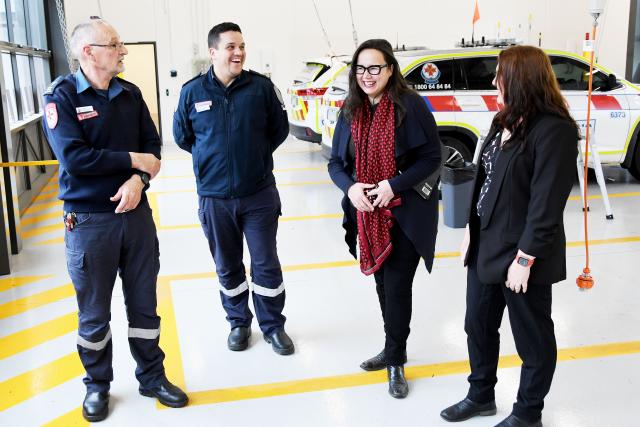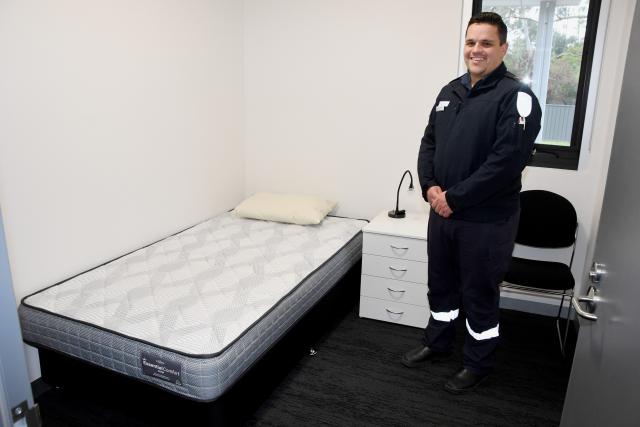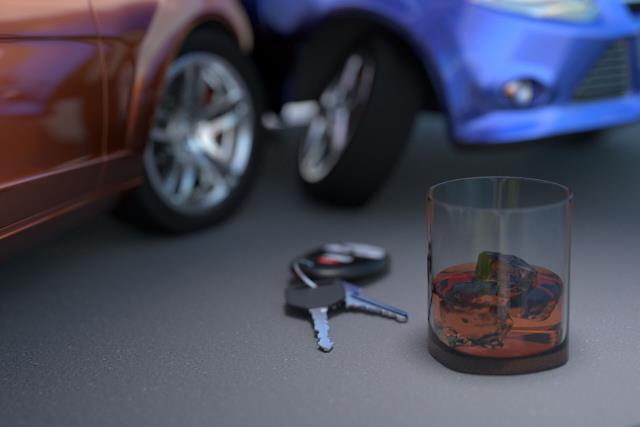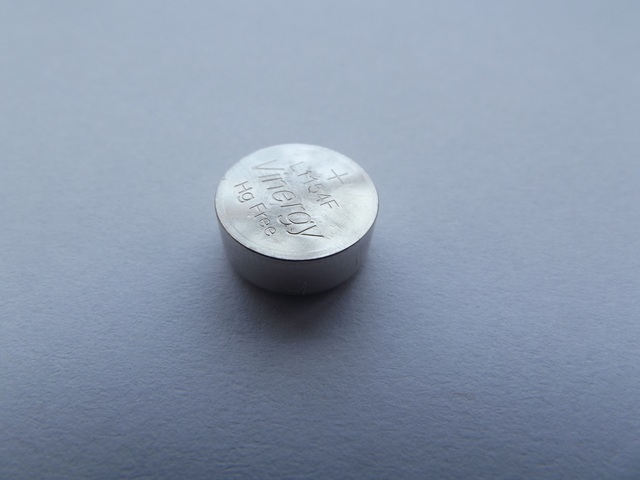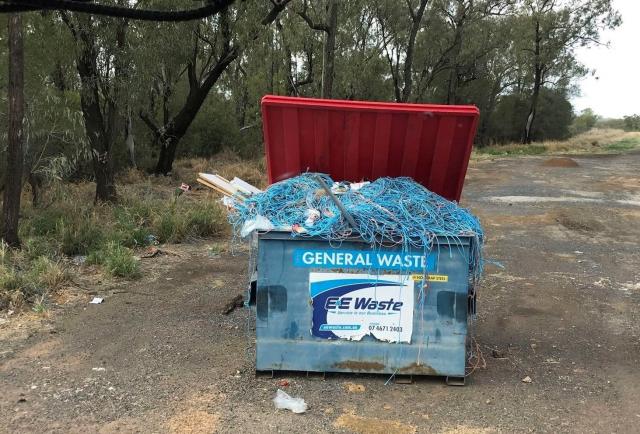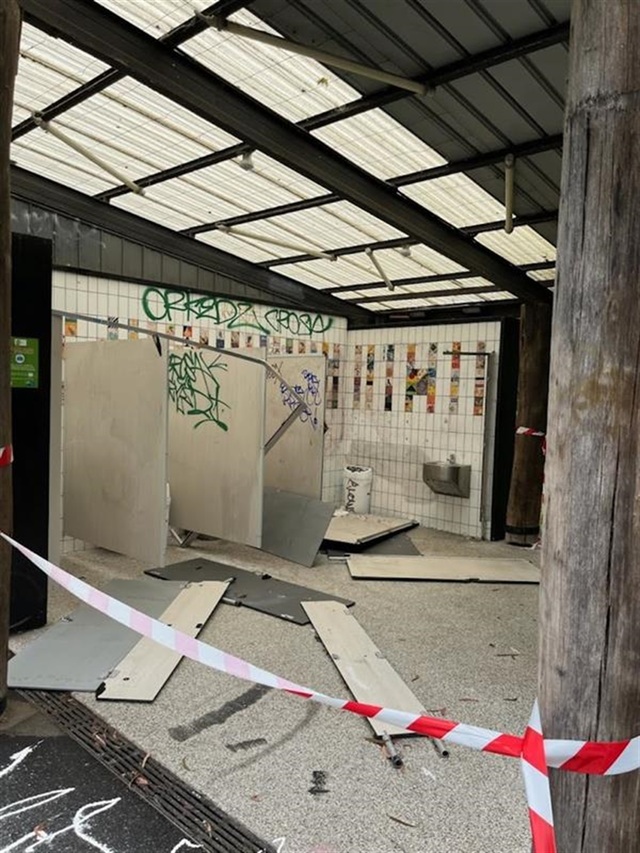Lilydale’s paramedic workforce has officially welcomed the opening of its new branch located just off Hull Road with a visit from Eastern Victoria MP Harriet Shing.
Although the crew moved into the new building in July, senior staff members were able to show Ms Shing the finished product on Thursday 13 October.
The new station now caters for the larger workforce of 41 full time employees, students and graduates, with better onsite training facilities, rest and recline rooms, a full sized kitchen and outdoor area.
Team manager Steve McCauley said there was no comparison between the old branch building in the centre of Lilydale to the new Charles Road location.
“The old branch was 40 years old and we just outgrew it. It did its purpose when it opened and still maybe 10 or 20 years ago but things just exploded,” he said.
“We’ve got new cars, the workload doubled over that time, since 2008 I think it was. As the population has grown in the area too, we’ve been relied upon more often.”
Senior team manager Andrew Turner said the former Lilydale branch was established as a basic life support service but “our skill set has advanced so we’re now an advanced life support” branch.
Mr Turner said with nine graduates training at Lilydale for 12 months, “these facilities match what they need”.
Having a dedicated training room which can be used for CPR training, studying or area training days, Mr McCauley said it has been a really good asset.
“Training at the branch is great because we don’t always get to see certain scenarios out in the field all the time.
“So doing that low frequency scenario work is really good and allows [graduates] to practice those skills in a very low stress environment rather than trying to learn out in the field.”
Acting area manager Jo Wilton said as one of the larger stations in the east, Lilydale may become a hub for leadership teams or managers to meet and do training as well.
Ms Wilton also said Lilydale now has the capacity to set up in an emergency situation to host travelling crews, something that would not have been possible at the old branch.
More than that, however, the design of the building brings a calming feel, something Ms Wilton said would only help with her staff’s mental health and wellbeing.
“It’s a place to debrief. That is one of the best welfare things that we can do for crews, to debrief with each other and with their managers as well. So it’s a nice quiet location, shut off from the world,” she said.
When summer comes, paramedics will be able to enjoy some sun with a grassed area, as well as a relaxed lounge space to unwind between jobs.
“The shifts are so long, having that ability to actually physically and mentally switch off during those long shifts, for longevity in this and to keep balance in your life, these are the things that just break up a long shift and give you the ability to stay concentrated when you do go back out there again,” Mr Turner said.
Ms Shing said as communities grow, developments such as Kinley begin populating the area more and as families wish to call the Lilydale and surrounds home, emergency services need facilities to allow for steady growth alongside that demand.
“It’s been so important to make sure…that we’ve got the frontline facilities for emergency services and in particular, our paramedics, to be based and to learn and to train but also to find opportunities for rest and recovery,” she said.
“Paramedic work is some of the hardest and most demanding work there is and it’s only right they have facilities that accommodate the challenges of the job and recognise the contributions they make.”
The paramedic workforce has increased by more than 66 per cent since 2014, close to 2,200 paramedics to meet the growing population demands.
The Lilydale branch was funded by the State government in both the 2016-17 and 2020-21 budget and is one of 24 across the state to be built.
“I offer my thanks and respect to every paramedic who is there for people at that hour of greatest need and has consistently been able to provide world class care and support to people who need it,” Ms Shing said.
“Thanks also to their families, for the further contributions that need to be made at home in order for that health care to be delivered.”

